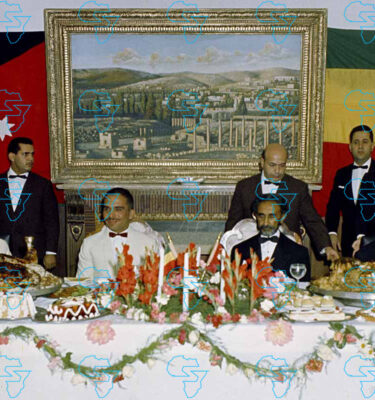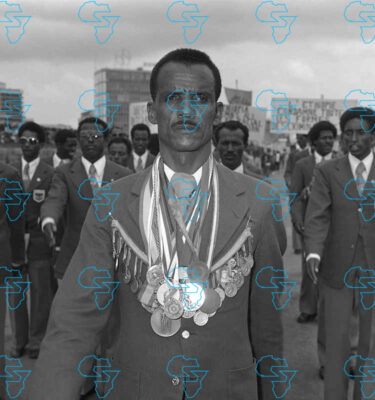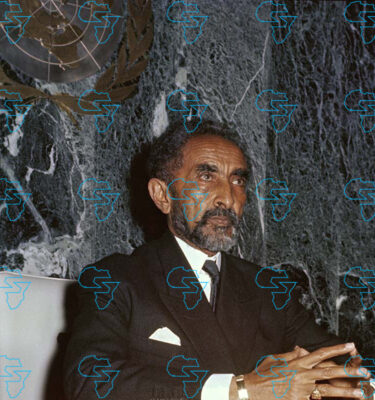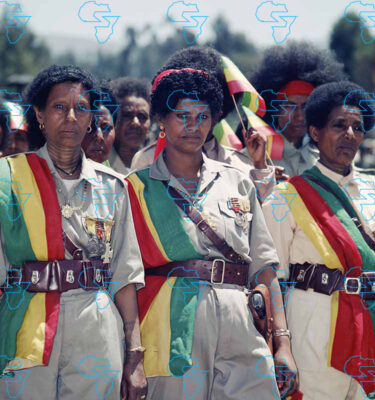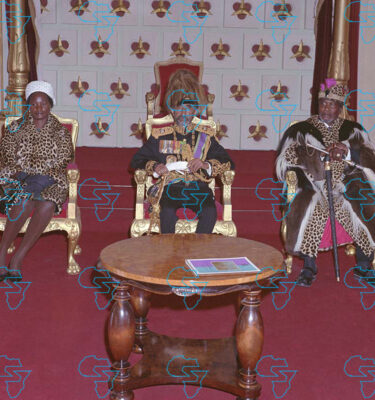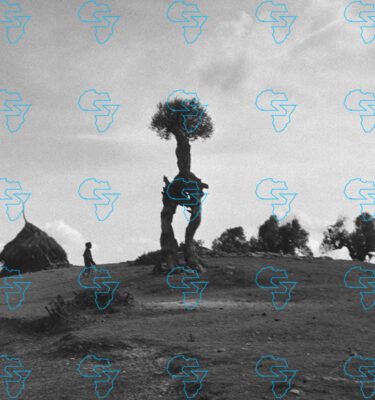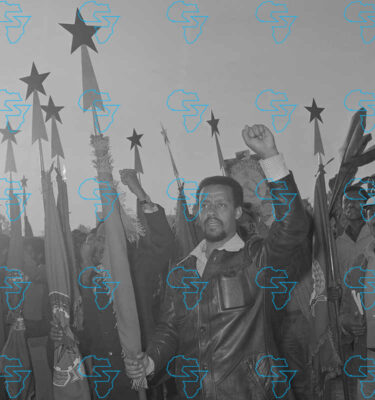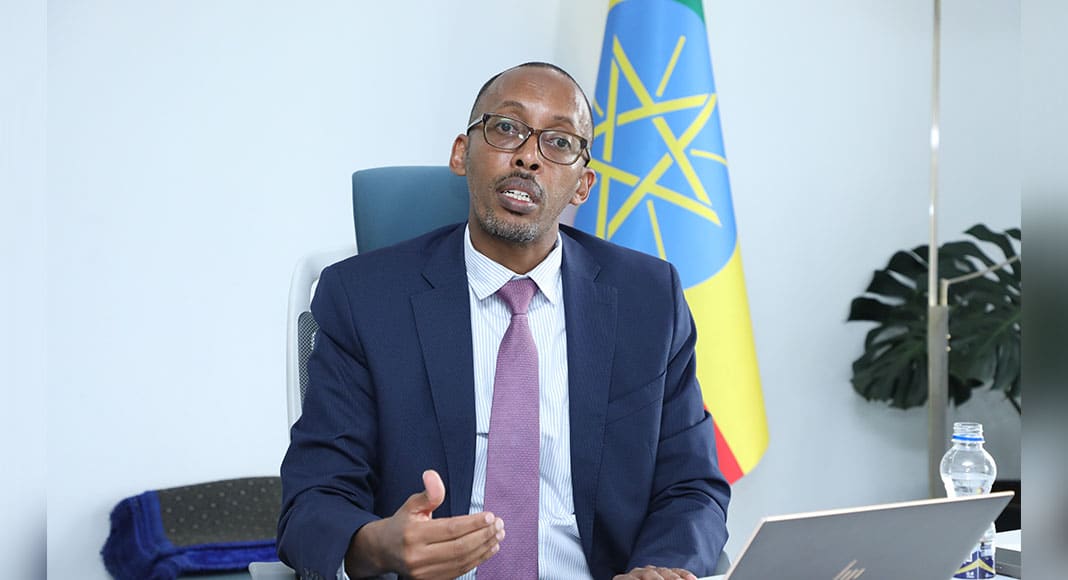
Abdurehman Eid Tahir, 42, was born into a prominent political family in Jigjiga, seat of the Somali regional administration. His father, Eid Daahir Farah, served as Secretary General of the Somali region for four years beginning 1991 before being elected as the first regional president following elections in 1995.
Abdurehman entered the civil service at a young age, after studying economics at Jimma University and later Haromaya. He began his career at the Somali Bureau of Agriculture before moving on to the Bureau of Capacity Building.
In 2010, he began an eight-year hiatus from government service, coinciding with the return to office of former regional President Abdi Mohamed Omar (Abdi Iley). In 2018, Abdurehman returned to the political stage as a member of Mustafa Muhumed Omer’s cabinet. He held several posts in the regional government, including stints in charge of TVET institutes, irrigation development, and urban development and construction.
In September 2022, Abdurehman was appointed Deputy CEO of the newly-established Ethiopian Investment Holdings (EIH). He took the post at the country’s sovereign wealth fund serving under founding CEO Mamo Mihretu.
Four months later, he took the helm at EIH after Mamo was named governor of the National Bank of Ethiopia (NBE). He now oversees 26 state-owned enterprises (SOEs) under the wealth fund, including giants Ethiopian Airlines, Ethio telecom, and the Commercial Bank of Ethiopia.
– Advertisement –
Abdurehman answers to a board chaired by recently appointed Deputy Prime Minister Temesgen Tiruneh. The Prime Minister used to chair the board, which includes the ministers of Finance and Education, as well as the CEO of Ethio telecom.
Samuel Bogale of The Reporter caught up with Abdurehman for an exclusive look at EIH. EXCERPTS:
The Reporter: It’s been more than two years since EIH was legally established, and it took control of SOEs in July 2022. What has EIH been doing differently? And have there been any milestone achievements?
Abdurehman: EIH is divided into two parts: portfolio management and the investment side. EIH is very different from the institution that used to manage the SOEs. EIH owns very significant SOEs that have a huge impact on the overall economy, and at the same time on certain sectors they are involved in. The number of SOEs today is close to 40, and 27 were transferred to EIH. But one, the Land Bank and Development Corporation, has been liquidated.
The economic growth in Ethiopia over the past few decades was mainly state led, and the SOEs played a crucial role. The government used them to implement the larger projects it was working on at the time. But the problem was with the way the government was treating both the SOEs and the projects. It wasn’t business oriented.
The projects weren’t given the sense of being commercial, but the SOEs were commercial entities. Whatever they do, they must have returns. The government was treating them as any other government agency that implements government projects. You don’t expect a project implemented by the Ministry of Water and Energy to be business oriented, because it is a kind of service that the government wants to provide to the public. But it can’t be like that for the SOEs; you expect cost recovery. This wasn’t the mentality, so it created a problem.
The main mandate given to EIH was to inject some level of commercial discipline into these SOEs. They need to leave behind the mentality of working like any other government agency. They are commercial entities, and whatever they do they should make a profit. In that regard, they should strengthen and modernize corporate governance and professionalize management. These were the kind of mandates that were given to EIH.
Once the companies were transferred to EIH, one of the priorities for the first year was to at least understand the situation these companies are in. What do we need to do In order to make them more commercial-oriented? What are the challenges? We have finalized designing a transformation programme which we are planning to launch in early June. The portfolio companies’ performance has significantly improved, at least in financial terms. In terms of revenue profitability, we are currently in a position where that has jumped by at least 30 percent.
Is it accurate to attribute the changes at SOEs to EIH? Are the performances better than in the years before the EIH came on to the scene?
A quantifiable thing you can look at is the financial results. How is the revenue doing? How are the profits? A number of these companies are undergoing reform, making changes to the way they do business. These companies couldn’t perform and, rather than provide support to whatever the government was doing, they became a burden. This is why the government had to establish another corporation to soak up the debts [the Liability Asset Management Corporation].
We had to make sure that these companies improve their efficiency level so that they don’t become an additional burden on the government. Their financial results have significantly improved in terms of the revenue they generate and profitability. The year-on-year change in terms of the overall profitability of the 26 SOEs under EIH jumped from 80 billion to 112 billion at the end of last fiscal year. This is about a 40 percent year-on-year change.
In terms of individual enterprises, there were five or six companies which were in financial difficulties. However, the last time we conducted the performance review during the first half of this year, we had only one company that has recorded losses, which is the Ethiopian Minerals Corporation.
The remaining 25 SOEs all recorded profits last year? How many of them came out of the financial trouble they were in during the fiscal year that ended June 2022?
Yes, they have all made some level of profit. The profit levels vary; some were very good and some gained very small profits, but at least they are out of the loss situation they were in. A number of them recorded losses in 2022, including the Ethiopian Sugar Industry Group and Ethiopian Pulp and Paper. There were some that were coming out of the difficult situations they were in and, of course, the current security situation is affecting their operations. But, apart from that, the companies’ situation has improved for now.
Scores of SOEs expressed their opposition to coming under EIH during the onboarding back in June 2022. They were concerned about losing decision-making power and the government’s close eye on them. Are they content now? Have they come to an understanding with EIH?
I wasn’t there for that. But it was a complete misunderstanding from their side. The way EIH is structured is completely different from the previous institution, which was a supervisory institution. EIH is itself a company; it isn’t just a government institution. It was established through commercial law as a holding company that owns these enterprises on behalf of the government. So we own them. It is meant to improve decision making on behalf of them.
In the past, if an SOE wanted to, let’s say, change its name or capital, it would go to the supervisory body, which would direct it to the Ministry of Finance, which would then have to take it to the Council of Ministers for adoption. Today, the SOEs only require a decision from the EIH board to make these changes, to establish subsidiary companies, to merge, or even to liquidate. Liquidating the Land Bank and Development Corporation was a simple decision from the board, for example.
This is meant to facilitate quick decision making for the SOEs. They have benefited in a big way. We have helped a number of enterprises gain approval on issues that were pending for two years because of the quick decision making process. The SOEs have, of course, come to an understanding now because they are benefitting from it.
EIH has signed investment partnership agreements with several foreign companies, including Toppan Gravity. How many have been signed thus far? How are these joint venture agreements going?
As part of the EIH investment mandate, we are expected to work as a co-investment platform for foreign investors. It is expected to become one of the country’s investment vehicles. In Ethiopia, there are at least two investment vehicles: the Industrial Parks Development Corporation, which encourages foreign investors who want to establish manufacturing plants, and the public private partnership scheme under the Ministry of Finance. EIH is like that.
It will take on risk for foreign investors. EIH will facilitate all kinds of things that need to be done when foreign investors decide to work with it. Even though we are trying to improve the ease of doing business as a country, we are not still in a position where we would say everything is easy. It is very bureaucratic and very challenging for foreign investors. EIH will improve foreign investor confidence because they know they would be partnering with a government owned entity that will facilitate for them. EIH is expected to act as a co-investment platform. We are also going to come up with our own capital and take part in that investment. This is the whole idea.
For the last year and a half, there has been progress in terms of the engagements we have with foreign investors, some of which came through government-to-government engagement. A good example is the agreements we have signed with companies from the United Arab Emirates (UAE). EIH was among the entities who signed three agreements with UAE firms in August 2023.
What are the terms of the investment agreements with UAE firms?
The main one was the establishment of fuel depots. One of the country’s challenges is the limitation of storage facilities for fuel. So we want to improve that. We are planning to install them in two places – the main one in Dire Dawa and another in Dukem. Negotiations are still ongoing.
Can you tell us more about other EIH investment partnerships?
Some of the investments, such as Toppan, came through EIH outreach. We are engaged in negotiations with foreign investors in a number of areas, starting with the hospitality sector and government-owned hotels like Hilton and Ghion. In terms of establishing a company, the Toppan deal is the only one that has made it past the shareholders agreement stage. We are on the verge of finalizing agreements for the hotels.
We also have agricultural investment projects that are progressing. One of the areas that were considered for the agricultural project is Tana Beles. Most of the negotiations have been finalized but because of the security issues, we are trying to wait until things improve. We will probably sign the final agreement by late May. The plan is to farm on 20,000 hectares. We also considered Omo and Maji.
What is the status of negotiations concerning the hotels? Who are the foreign investors?
We are working on four hotels [Hilton Addis, Ghion Hotel, Spa Service Enterprise (Filwuha), and Genet Hotel] and engagement with investors is progressing for all but Genet Hotel. You will learn who the investors are when the time is right.
What was the agreement EIH signed with the government of Djibouti in its first year of operation?
That one was a Memorandum of Understanding (MoU). We’ve actually signed a number of MoUs. This specific agreement with the Djibouti government was for them to construct a fuel port terminal. It is a new facility. Not the one we currently use.
We wanted to have a stake in the facility, because we are the main customer – we are the only customer. Rather than using the service like we are doing now, we needed to invest in something that would give us some confidence and decision making power as a country. The negotiations haven’t yet been finalized.
How many MoUs and investment agreements has EIH signed?
I don’t have a specific number but the number of investment projects that we either initiated or are related to our companies is more than 20. We signed MoUs for at least half of them, while engagement is still going for others. Once we have something tangible that works for both parties, it will then proceed to MoU level.
Toppan, the company, has been established, and it has been functional for the past few months. It is the only one that has passed the final agreement and establishment threshold. The other company established with EIH is the Ethiopian Securities Exchange (ESX). The government owns 25 percent of the Exchange through EIH. The rest is owned by various foreign or domestic private investors.
When EIH acquired a 25 percent stake in ESX along with four of its subsidiary SOEs, how and why were those SOEs chosen?
Those four SOEs [Ethiopian Shipping and Logistics Services Enterprise, Ethio telecom, Ethiopian Insurance Corporation, and Berhanena Selam Printing Enterprise] were included only due to a rule that there have to be at least five entities to establish a share company. Most of the funding came from EIH, but the SOEs were given a minor stake to fulfill that regulatory provision.
The Commercial Bank of Ethiopia (CBE) was not on the list but has since been added on as the fifth SOE to acquire the stakes in the Exchange with EIH. How come it was not part of the list in the first place?
We just made that decision. For CBE, if they wanted to come in, they would come with significant investment as they have now. At that time, we just needed four more entities to establish ESX with us. We’ve also decided that the SOEs that will be listed on the exchange are the first four on the list. Ten percent of Ethio telecom will be listed, as already announced.
What percentage will be floated to the public for the other SOEs? Are there any other enterprises selected for listing?
We have not decided with what percentage or amount the others will be listed. Some could likely see majority stakes floated. The Education Materials Production and Distribution Enterprise and the Ethiopian Tourist Trading Enterprise are the two additional SOEs to be listed. The last two aren’t investors in ESX, but they are among those we decided to list.
Through support from foreign partners, we recently conducted an assessment on the readiness of the enterprises to be listed. There are stringent criteria they need to fulfill to list. The assessment gives us an idea of what needs to change with these SOEs so that they are able to list. EIH will establish a unit that specializes on the capital market issue. This unit will assist the SOEs in preparing for listing.
Is listing CBE a possibility?
No. Not now. It might be in the future, but not currently. If we partially list Ethio Telecom, I don’t think we need CBE. Ethio telecom is huge, EIC is the largest insurance firm in Ethiopia with 50 percent market share, ESLSE is a massive enterprise and the only entity in the industry, and Berhanena Selam is the largest printing company in Ethiopia. These are already huge businesses.
One thing we’ve improved with many of our SOEs is their financial reporting. The smallest thing the capital market requires is to disclose your financial report statements. That culture wasn’t there in Ethiopia. I think we’ve managed to have 18 of our enterprises, including CBE and Ethio telecom, disclose their financial statements. The only company that used to disclose was Ethiopian Airlines.
There are initiatives to partially or fully privatize some state-owned enterprises. What consequences do you foresee privatization will have on EIH and its ownership stake in some of these SOEs?
The government has privatized several SOEs in the past few years. The main engine for the economic growth of Ethiopia was government investment, but a certain level of private sector investment is necessary for the economy. There are also enterprises that would be more efficiently managed under private ownership.
Is it going to affect the ownership of EIH? It is definitely going to affect ownership. EIH owns the enterprises on half of the government, so this is ultimately owned by the government. Our intention with the sugar factories was to fully privatize them; once we sell them we don’t own them. If we sell a minority stake, we are still a majority owner and we will still be able to make major decisions.
Do you think investors would be happy to invest in an SOE knowing that the government will control part of the investment?
Why wouldn’t they be happy to have the government with them in the investment? A good example can be the Ethiopian Securities Exchange. They know the government is going to own 25 percent but they came, and now it is oversubscribed. Why do you think they came? The government wants everyone to have an even playing field in business. In a way, it gives them more confidence. if the government is involved.
Why didn’t Ethio Telecom’s partial privatization process materialize? Did potential investors lose their interest?
They didn’t lose their interest. The government prioritized the 10 percent take first. Foreign investors will also invest significantly in the SOEs. Once we finish the transfer of the 10 percent to the public, it will then hopefully be initiated.
EIH lists six thematic areas, and claims to avail 24 investment opportunities on its website. Can you explain how you prioritize sectors? Also, how do you assist your enterprises to work in these sectors better?
EIH gives consideration to certain issues in terms of prioritization. The first thing is the national development plan. When the government establishes a commercial entity, the intention is not always for commercial objectives. There are other goals that the government has in mind for those commercial entities. One is that they play a crucial role in terms of whatever the government has planned to do for the country. We look at the national plan and we prioritize projects that would have significant impact in terms of achieving those objectives. Those areas you mentioned are what the country has prioritized in the national development plan.
The other consideration for EIH is the needs of our SOEs. A strategy for optimizing the existing companies is through investment. We prioritize companies that need immediate support. One of the mandates given to EIH is to approve loan programs for SOEs. The loan these entities are taking should be for a project that is commercially viable and that they will be able to repay. It is not to restrict them, but to make sure that we don’t fall into the traps of the past.
In the past, CBE was given orders from the government to provide credit to this entity or that entity. It isn’t like that today. We have granted full independence to the CBE to assess for itself any proposal from an SOE. If CBE doesn’t think it is commercially viable, it doesn’t give out the loans. Our idea is that if you have a bankable project, you just go deal with them directly.
But the SOEs might desperately need the loans to enhance their capacity. How does that work?
Since some of our SOEs can’t take on debt on their own, they really need capital injections. We then need better know-how from people with better understanding of how to manage these things. That could come through partnership with foreign investors. One of the things we are trying to prioritize for SOEs that aren’t doing very well is to incentivize foreign investment in them. We conduct an asset valuation so that we own whatever our asset value is and they will own whatever investment they bring in.
A good example is the hotels. We are trying to partner with investors who can come in and invest. Our share is going to be the value of the current asset, and their share is going to be whatever the investment they will bring. In that way, investment is becoming one of the strategies we use to optimize the companies we already own.
The distinction between EIH and the Public Enterprises Holding and Administration (PEHA) is confusing to many. Is it performance, debt sustainability, or something else that determines whether an SOE is placed under EIH or PEHA?
At the time, the decision was to close PEHA and bring all the SOEs under the Ethiopian Investment Holdings. There was a national committee formed to establish EIH, so a decision was made that it might not be an ideal solution to bring all the SOEs at once since EIH was new. It was decided to do it through a gradual process, to bring in the 27 enterprises now. I can understand why people ask that, because the companies are the same.
The Development Bank of Ethiopia (DBE), which is a commercial entity, is under PEHA. Even the Ethio Engineering Group is very much improved and they are making profit now. It is true that Ethiopian Electric Power (EEP) has the largest debt, but that is the mentality of looking at the debt side of things. When you look at the other side, EEP has the most valuable asset in the country, the Grand Ethiopian Renaissance Dam (GERD), and it’s under PEHA. Only the Ethiopian Electric Utility (EEU) is under EIH. Under EIH today, there are around five enterprises whose audits are yet to be finalized, because they have a huge audit backlog of a number of years.
Is there a plan to transfer SOEs under PEHA to EIH in the future?
There isn’t a specific plan. The government has decided to follow this centralized holding company model, which is very much different from the role that is played by supervisory institutions. Once the situation is fully improved, the decision might be made one way or the other.
Is there anything you would like to add?
We have finalized designing a transformation programme, which looks to improve the situation of SOEs under EIH. It will be launched in early June. It is a programme designed to transform the enterprises to achieve the objectives of the reform. EIH itself is an outcome of the reform the government started three or four years back. This reform does not stop by establishing EIH. The idea is to impart the objective of reform to the enterprises themselves. It will take time to transform the companies, so the programme is going to be a framework that will guide them in the right direction.
.
.
.
#Ethiopian #Investment #Holdings
Source link



